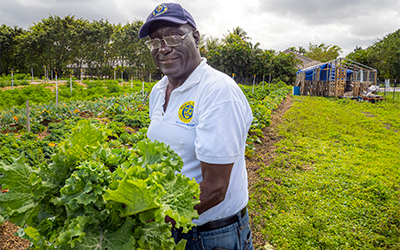
Global food security in 2050: the role of agricultural productivity and climate change
U. L. Baldos and T. W. Hertel
The Australian Journal of Agricultural and Resource Economics (1 October 2014)
In this paper, we examine how the complexities introduced by trends in agricultural productivity and climate change affect the future of global food security. We use a partial equilibrium model of global agriculture incorporating a food security module that links changes in the average dietary energy intake to shifts in the full caloric distribution, allowing us to compute changes in the incidence, headcount and average depth of malnutrition. After validating the model against an historical period, we implement a series of future scenarios to understand the impacts of key exogenous drivers on selected food security outcomes. Our results show improvements in global food security for the period 2006–2050. Despite growing population and increased biofuel demand, baseline income growth, coupled with projected increases in agricultural productivity lead to a 24 per cent rise in global average dietary energy intake. Consequently, the incidence of malnutrition falls by 84 per cent, lifting more than half a billion people out of extreme hunger. However, these results hinge heavily on agricultural productivity growth. Without such growth, there could be a substantial setback on food security improvements. Climate change adds uncertainty to these projections, depending critically on the crop yield impacts of increasing CO2 concentrations in the atmosphere.
keywords: Agriculture; Food Security